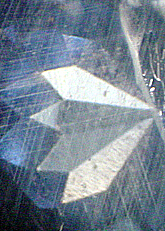
When parallel, needle-like inclusions, or tube-like channels, are oriented along two or more of the crystal faces of a mineral, and when that stone is cut as a domed cabochon, a four to six rayed figure is displayed on the dome. This phenomenon of reflected light is called "asterism" and the gems are called star stones. The most commonly seen examples are star corundums; where there are inclusions of titanium oxide (rutile or "silk") parallel to three crystal faces giving a six rayed star. In rare cases a twinned crystal slightly offset with its own set of rutile needles can lead to the formation of a twelve rayed star.
Although rutile is an extremely common inclusion in sapphire, few good, natural, star sapphires are found. One of the major reasons is that the heating which is almost universally done to sapphire rough, dissolves rutile needles, clarifying and sometimes color enhancing the stone, yes, but eliminating potential stars!

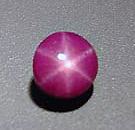


The only other gem which commonly forms stars is quartz, where the phenomenon tends to be more visible in transmitted than n reflected light, in this species, rose quartz is the most frequently asterated variety. Most citrine in commerce has been heated which tends to dissolve the fine rutile inclusions necessary for star formation, so it is rather rare. In fine, near transparent quartzes which have been cut to near spherical shape, multiple stars can form an intersecting pattern over the surface.
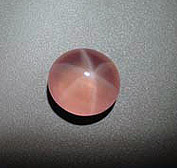
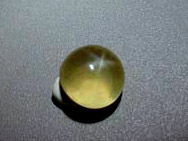
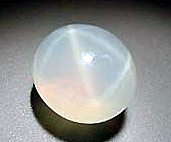
Synthetic star corundum has been produced for many decades in a process whereby a high concentration of very short rutile fibers are added to the crucible as the raw materials are melted, and the resulting crystals are cooled in a very controlled manner. Such "Linde" sytle stars look extremely uniform and bright--->they almost seem painted on the surface rather than to emanate from within the stone. In more recent years, diffusion processes have been developed by which natural gemstones (almost always corundum) can be star enhanced. In contrast to unenhanced, natural star gems these diffused pieces, like the synthetic ones, have stars which are stronger, straighter and appear less mobile, and are more confined to the surface.


Other much less commonly found star stones include diopside, enstatite, moonstone and garnet which show four rayed stars and beryl and spinel which usually show six rayed stars.
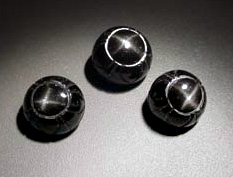
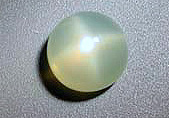
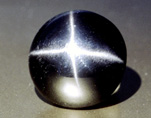

In some cases natural patterning, color zones due to twinning, or inclusions can form a four or six sided figure in the a stone, but as these are not dependent on light for their existence, and are a permanent part of the gem, they are not considered star stones.
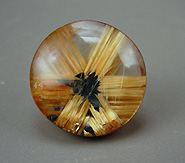
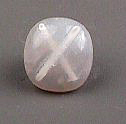
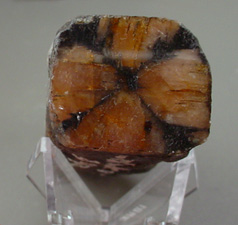
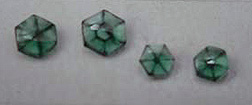
Star stones are usually native cut and often have bulging sides and an uneven bottom which can complicate the setting process for jewelers. Rather than this indicating lack of skill or care, we should consider that native cutters are very skilled at maximizing the star potential of any piece of rough. Depth in the bottom of the stone can increase the clarity of the star and controlled unevenness can often help center the star in rough that is difficult to orient.
Speaking in terms of corundum and quartz, star stones have good wearability and are often chosen for rings. When choosing a star stone for your collection or for jewelry wear, it is important to remember that the star you see is a function of the quantity, direction and quality of available light; and it will show itself to best advantage only in strong light, such as sunlight or a single overhead light source indoors, especially when that light is perpendicular to the base of the stone. Under dim, diffuse or multiple light sources, or if held vertically or at extreme angles, all but the very strongest star stones will merely look chatoyant.
Several factors influence the value of star stones. First would be the rarity of the material itself. For example, star beryl or star spinel have inherent rarity value not possessed by star quartz or corundum, since these species so infrequently form stars. Secondly, within any gem category value rises with the same three basic parameters that control most of any gem's value: color, clarity and carat weight.
In general, the more saturated the color, the more translucent, the fewer distracting, visible inclusions, and the larger the size, the more valuable a star stone is. Added to these basics are the characteristics of the star itself. The best pieces have strong stars which show themselves in less than ideal lighting conditions. These stars have straight, evenly bright legs which reach all the way to the girdle of the stone and are well centered in the gem.